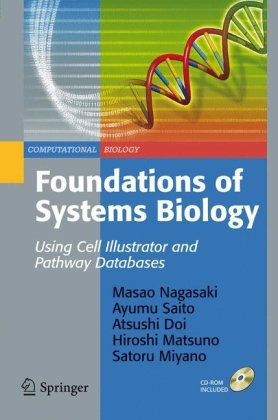

Most ebook files are in PDF format, so you can easily read them using various software such as Foxit Reader or directly on the Google Chrome browser.
Some ebook files are released by publishers in other formats such as .awz, .mobi, .epub, .fb2, etc. You may need to install specific software to read these formats on mobile/PC, such as Calibre.
Please read the tutorial at this link: https://ebookbell.com/faq
We offer FREE conversion to the popular formats you request; however, this may take some time. Therefore, right after payment, please email us, and we will try to provide the service as quickly as possible.
For some exceptional file formats or broken links (if any), please refrain from opening any disputes. Instead, email us first, and we will try to assist within a maximum of 6 hours.
EbookBell Team

0.0
0 reviewsNavigating safely through a wealth of genome, protein and metabolite information, as well as a host of information processing tools, without getting lost is crucial for successful research in – and teaching of - molecular biology.
This concise, easy-to-follow textbook/guide serves as a valuable introduction to contemporary cell biology for readers and offers insight into the key research directions in the field. It begins with an overview of existing tools for finding, designing and investigating metabolic, genetic, signalling and other network databases. This practical guide then introduces Cell Illustrator®, a software tool for biological pathway modelling and simulation, developed by the authors. In-depth discussion reveals how this tool can be used for creating, analyzing and simulating biological models, thereby explicating and testing current understanding of basic biological processes. Readers do not require prior knowledge of differential equations or programming.
Features:
• Provides many helpful learning aids, such as detailed examples throughout, and exercises and solutions
• Designed and structured to be part of a semester-long course
• Discusses the computational functionalities required for Systems Biology
• Addresses practical issues surrounding software tools
• Introduces the current big bio-databases such as TRANSPATH® by Biobase, and explains why and how they can be used to develop and support systems biology research
• Explains important pathway databases and software tools, together with their related concepts
• Guides the reader to model pathways in a step-by-step and clear manner
• Contains a Foreword written by Professor Andreas Dress, Director CAS-MPG Partner Institute for Computational Biology, Shanghai Institutes for Biological Sciences, Chinese Academy of Sciences
Written for undergraduates, this reader-friendly introduction to the field of Systems Biology offers insight and teaches sound expertise in the subject. It will also prove valuable to graduate students and professionals wishing to develop and support their systems-biology research.